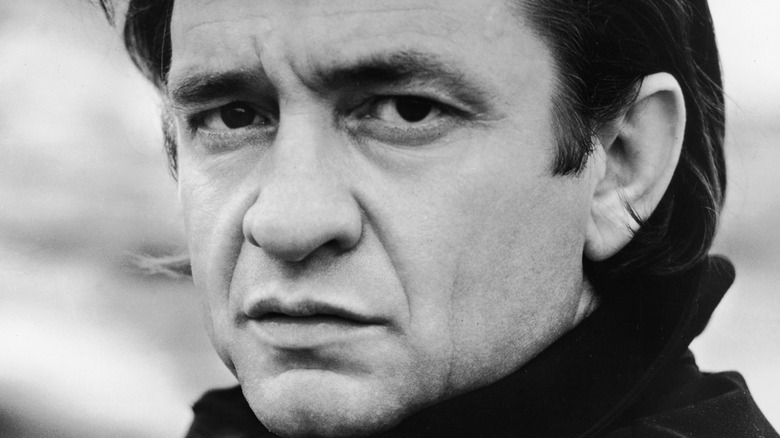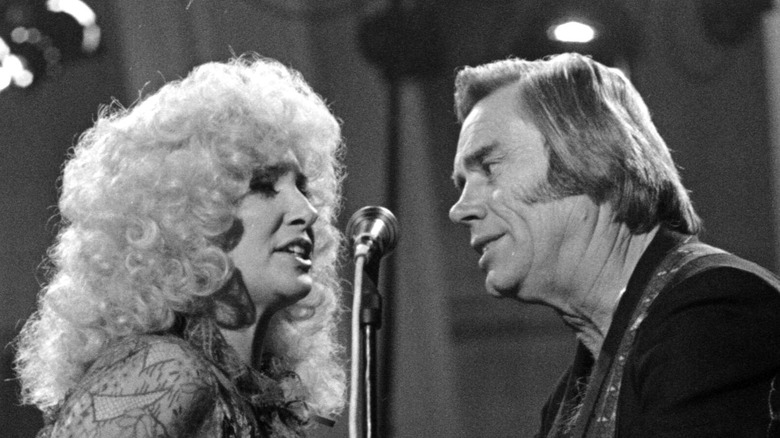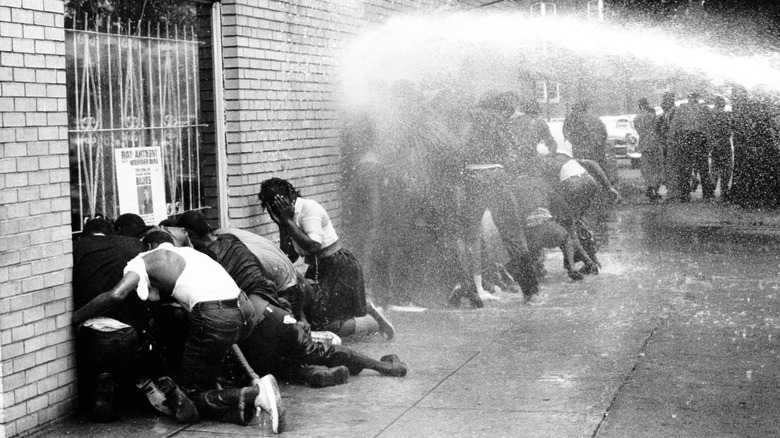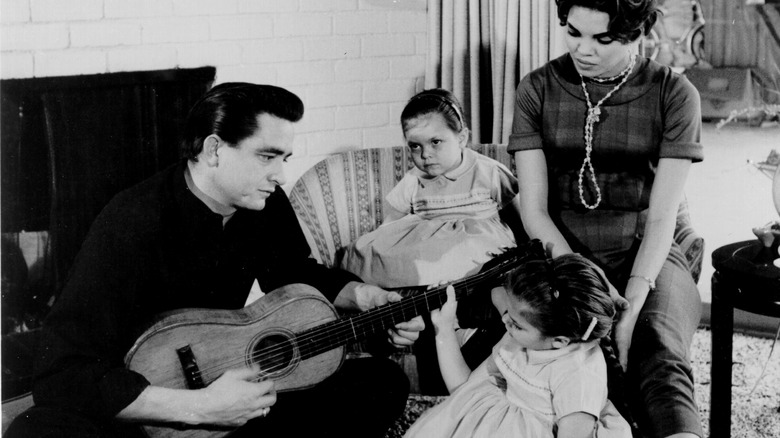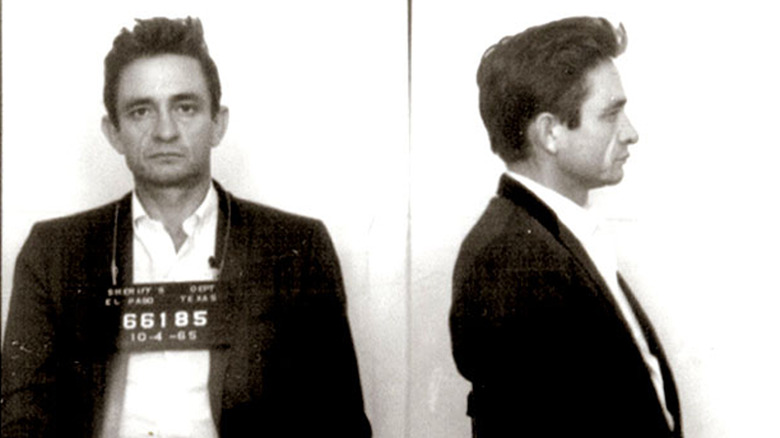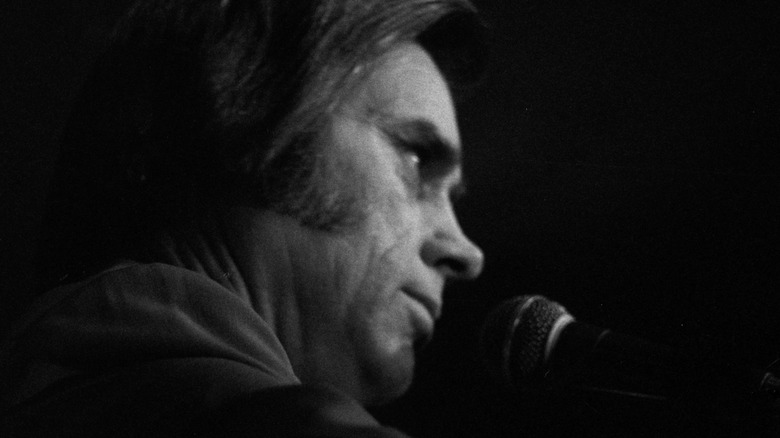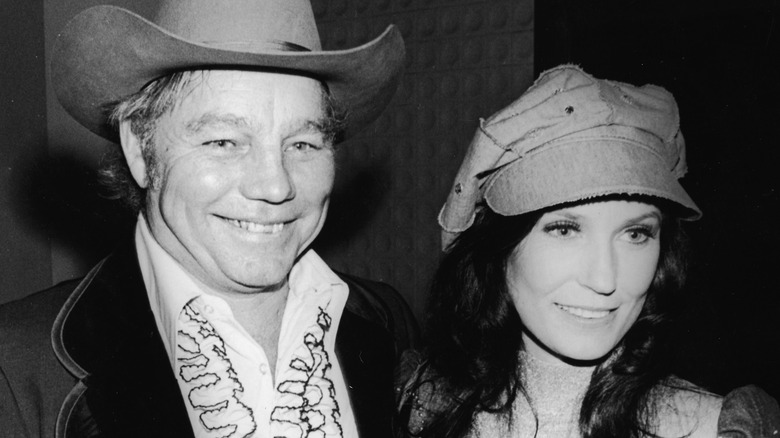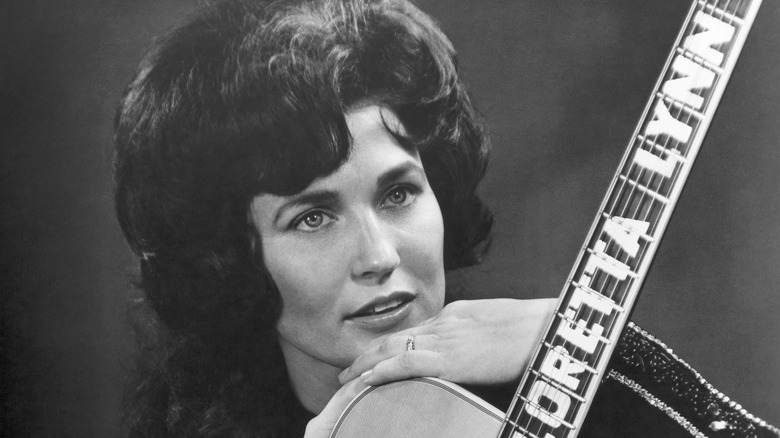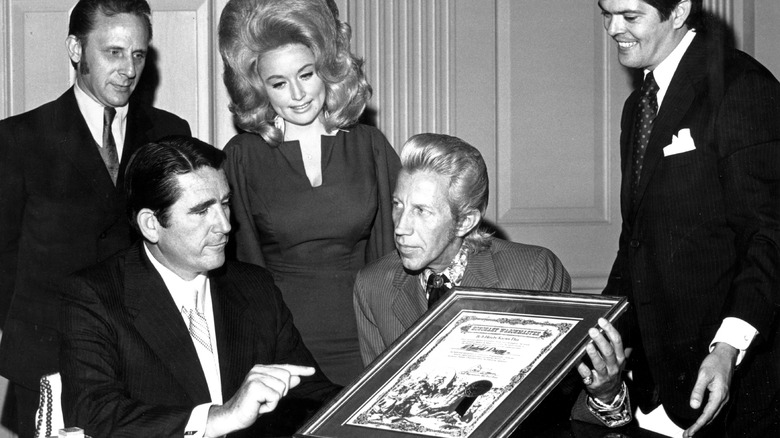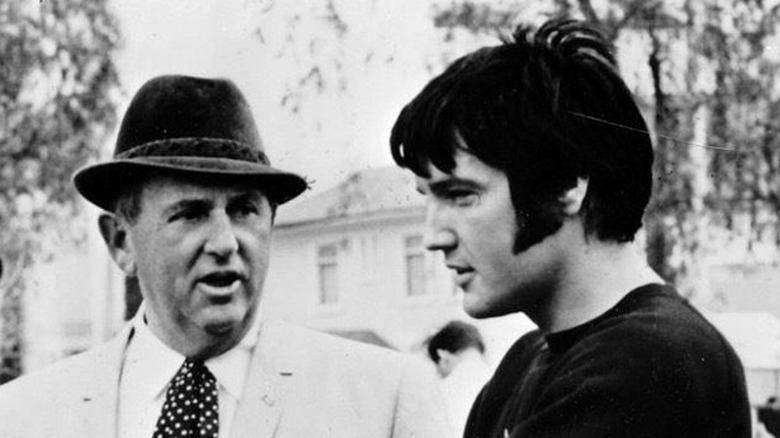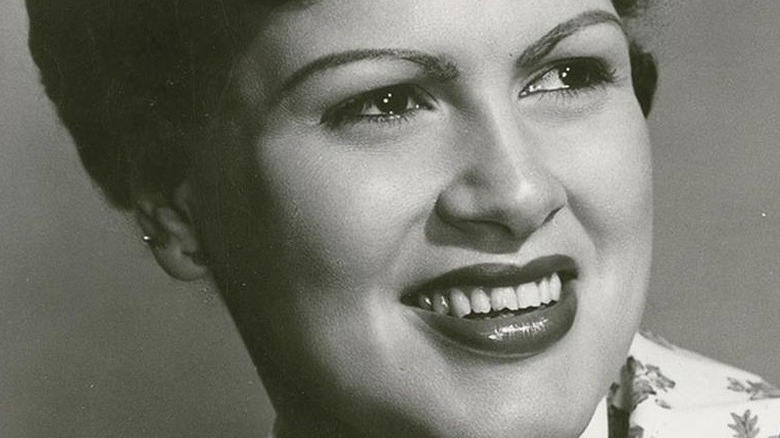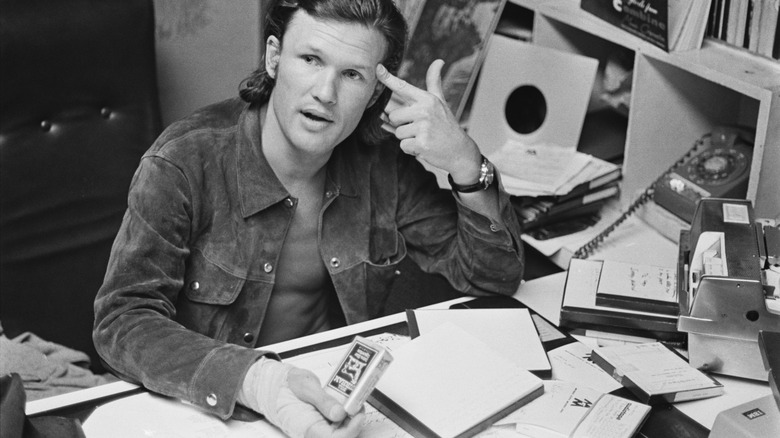The Dark Side About Being A Country Star In The 1960s
The 1960s were a tumultuous time of profound social change, which witnessed the rise of countless countercultural movements. America was experiencing a heady climate of unrest and upheaval, which many artists mirrored in their music. The times, as Bob Dylan famously proclaimed, were a-changing.
This instability coincided with the expansion of television and radio stations, which transmitted thrilling new genres of music into the homes of millions of listeners every night. Despite these changes, the honest, down-to-earth themes of country music still resonated with the sensibilities and struggles of many Americans. According to author Jeremy Hill's ''Country Comes to Town,” city life blossomed, and rural life became romanticized. As a result, many songwriters headed to the neighborhoods of cities like Nashville to seek fortune and fame.
In such hotbeds of talent and innovation, many artists found kindred spirits eager to reimagine tradition and transform the rougher country sound of earlier decades. The result was a sleeker style that promised an unprecedented popular appeal. As a result, such singers rose to prominence and became household names (via Britannica). However, as the old adage goes, the tougher the life, the sweeter the song. While the country music of the time was intertwined with themes of love, loss, and nostalgia, it often masked a darker side that drew from a well of controversy and personal pain. Artists often tried to bury their sorrows from the public eye, with mixed results. Yet with fame came notoriety, and many country artists paid a heavy price for their success. Here are some of the sinister sides of country stardom.
Touring fragments family life
The 1960s saw a tremendous shift in the DNA of the American nuclear family. The emergence of feminist empowerment and the battle for women's autonomy saw divorce becoming less taboo, as reported by National Affairs. During this time, the country experienced an upsurge in divorce rates as many dissatisfied spouses were free to leave their miserable marriages. Simultaneously, this new crossover country sound was gaining traction. Many country stars took their shows on the road to capitalize on their budding success. Performers often felt pressured to juggle their families and careers, and hectic touring schedules made it difficult for them to be ”father,” ”husband," or ”wife” of the year.
Such relentless traveling presented unique challenges to family lives as the road brought its fair share of temptations. To illustrate how touring can strain a marriage, look no further than the real-life relationship between Tammy Wynette and George Jones (pictured above). Both artists had already been married twice and had toured together as a duo before eventually splitting from their partners and eloping, according to Biography. Their marriage, however, was fraught with heartaches, reconciliations, and, ultimately, two separate divorce filings.
Their daughter Georgette Jones later told Vanity Fair about the toll such dissonance had on their family and how the couple's art imitated their troubled lives. Tammy Wynette's 1968 hit "D-I-V-O-R-C-E" explores the impact of divorce on a family. This tragic tune features a lamenting mother who tries to shield her infant son from the pain by spelling out the word when around him.
Segregation is rife
While marriages became a battlefield for equality, America was also dealing with the ugly reality of its colonial past and embittered race relations. Despite the musical roots of country music being steeped in the blues and R&B, many artists of color found themselves excluded from the table of country music's burgeoning success, according to Time.
Many country musicians found their careers bearing the brunt of segregation and the ghosts of discriminatory Jim Crow-era mindsets. This led to a lack of diversity in mainstream country, and a parallel music market emerged for artists of color. Often, their contributions as session musicians were uncredited, or their records were sold as ”race records.” White America, on the other hand, became the genre's target audience. Audiences, too, experienced the withered fruits of such harsh separations.
Black audiences couldn't attend white-only shows, band members of different races couldn't play together, and many venues refused to schedule gigs for artists of color, as verified by Rolling Stone. A simple peek into the past reveals that the famed Grand Ole Opry, one of country music's most beloved institutions, excluded many artists of color during this period, as supported by The New York Times. Eventually, with the passing of the Civil Rights Act in 1964, opportunities became more available to discriminated artists. Charley Pride was one industry-acclaimed artist who overcame adversity and persevered to become a country superstar. Pride would later reflect on America's racial attitudes in an interview with The Dallas Morning News, via AP News, saying that such ”skin hangups” were ”a disease."
Private life becomes public
The private lives of 1960s country stars were forever affected by the double-edged sword of fame. As their ballads were broadcast across the country, many artists found that the spotlight shone not just on the stage but also spilled into their personal lives. Given their growing popularity, many of their personal choices, beliefs, and relationships came under public scrutiny. As certain country stars became national treasures, a newfound pressure arose as their reputations and careers depended heavily on their public image. This intense criticism often made it difficult to cope in their daily lives.
Many country artists of the time faced fierce backlashes and drew the ire of their audience when they appeared to stray from their often-saccharine images. Tammy Wynette and George Jones are two such examples. According to Biography, when the two were separated, prying fans would yell out questions about Jones' absence during Wynette's appearances.
Another more insidious example is that of Johnny Cash and his first wife, Vivian Liberto. After newspapers leaked photos of Cash's wife following a 1965 arrest, many of his fans and far-right conservatives around the country were scandalized. At the time, interracial marriage was massively stigmatized, and the public disputed Liberto's racial identity. According to The Washington Post, Liberto, who had Sicilian heritage, was mistaken for Black. As such, the Cash family received regular death threats from white supremacists.
Risk of substance abuse
While whiskey was the muse of countless country tunes, it wasn't the only devil on many country performers' shoulders. Many musicians struggled to maintain momentum when faced with grueling touring schedules that involved traveling hundreds of miles daily just to make the next show. These rigorous touring regimes, along with immense expectations to consistently deliver stellar performances, took its toll on the bodies and psyches of many country artists. As such, many country artists turned to drugs and alcohol to deal with such demands.
Unsurprisingly, many country stars' personal problems became aggravated by alcoholism and drug addiction. A Rolling Stone feature collects session musicians' and songwriters' first-hand accounts of how commonplace it was for musicians to swallow pills just to cope. George Jones and Johnny Cash were two of country music's biggest stars who notoriously grappled with drug addiction throughout the 1960s. Initially, Jones seemed able to disappear and reappear just in time to fulfill his professional obligations. But, after slipping into alcoholism and cocaine addiction, he eventually became nicknamed ”No Show Jones” due to his tendency to miss performances (via The New York Times).
Cash has candidly expressed his struggles with drug addiction throughout his life. For example, he recalls in his memoirs how simple it was to receive medications from doctors and how easily they became a comforting crutch. In addition, Cash's son, John Carter Cash, believes both his parents suffered from prescription medication addictions throughout their careers, corroborating the singer's publicized substance abuse difficulties, as Reuters reports.
If you or anyone you know is struggling with addiction issues, help is available. Visit the Substance Abuse and Mental Health Services Administration website or contact SAMHSA's National Helpline at 1-800-662-HELP (4357).
Lack of mental health support
While barriers to discussing mental health are thankfully fading today, it's worth noting that in the 1960s, openly talking about private mental health issues was remarkably rare (per National Library of Medicine). Given the frequent references to heartache, family problems, and loneliness in so many country songs, it's perhaps unsurprising that many country stars wrestled with depression, anxiety, and addiction in their personal lives.
Many country music singers had a hard time addressing and overcoming their demons for years because of the constant pressure of fame and the stigma associated with mental illness. As George Jones poignantly puts it in his autobiography, ”My talent, though it brought me fame and fortune, never brought me peace of mind.” The glorification of male country musicians' desire to party hard may have produced a machismo-filled cocoon, making it more challenging for these men to find a support network — an idea that's supported by a Rolling Stone article on drug misuse.
It's equally as likely that female country artists suffered in silence about their mental health battles. According to author Jimmy McDonough's "Tammy Wynette: Tragic Country Queen,” Wynette endured 12 episodes of electroshock treatment while pregnant in 1964 to combat debilitating depression — an incident she kept close to her chest as her celebrity increased. Fortunately, many prominent country musicians of the time received treatment. They revived their careers in the following decades, raising awareness among their fans.
If you or someone you know needs help with mental health, please contact the Crisis Text Line by texting HOME to 741741, call the National Alliance on Mental Illness helpline at 1-800-950-NAMI (6264), or visit the National Institute of Mental Health website.
Domestic violence
In stark contrast to the rise of feminism in the 1960s comes the harrowing realization that domestic violence had remained somewhat normalized during this decade. While many country songs of the era portray troubled men letting alcohol and drugs distort their judgment, the silent reality was different for many female artists. Domestic violence was often downplayed or outright ignored by many in the industry. As a result, many perpetrators were allowed to continue their careers without real repercussions.
Part of the reason for this is that domestic violence was often considered a private problem, and abusive behavior went unchecked, as per Independent Women's Forum. Another significant factor is due to the 1960s country music industry being heavily male-dominated, which perhaps led to a tolerance of such behaviors. In her book about her marriage to Johnny Cash, Vivian Liberto describes her ex-husband allegedly getting physical with her. Another, more harrowing example involves Tammy Wynette, who claimed to have been kidnapped and beaten by a stranger at gunpoint. There is considerable uncertainty regarding this incident, per Country Living. In the decades since, Wynette's daughter Georgette Jones has come out in support of the allegation that Wynette made up the tale to protect the suspected offender: her manager and fifth husband, George Richey.
Another notorious relationship in the industry involves Loretta Lynn and her husband and manager, Oliver "Doolittle" Lynn (pictured above). Throughout her career, their rocky marriage was riddled with drunkenness, violence, and cheating, which inspired many of Lynn's songs, per Biography. However, according to CBS, Lynn would later admit that, despite her feelings, she "put up with it because of six kids."
If you or someone you know is dealing with domestic abuse, you can call the National Domestic Violence Hotline at 1−800−799−7233. You can also find more information, resources, and support at their website.
Infidelities are commonplace
Even the most cursory glance of the 1960s country music canon will reveal that infidelities and lovers scorned inspired many a musician to put pen to paper. Often they lamented their heartbreak or, in some cases, celebrated their forbidden lovers. Long stints away from home, excessive partying, broken relationships, and simmering sexual tensions between performers are all the ingredients for a classic maelstrom of cheating.
After all, one of the most famous love stories in all of country music, Johnny Cash and June Carter's, was born out of an affair as both had been married to other people when they first met, per The Atlantic. However, according to Robert Hilburn's book "Johnny Cash: The Life," Cash's persistent infidelities would haunt their relationship throughout the 1960s. It should be emphasized, however, that most cheating song viewpoints are male. It is comparatively rare for female artists to brag about their extramarital conquests. Oftentimes, female country stars describe the sorrow and anger that comes from an unfaithful partner.
Loretta Lynn is one of the best-known songwriters to convert these dalliances into art. Lynn often used the heartbreak of her stormy marriage and her husband's serial infidelities to create lasting songs connecting with a large section of her audience. "Fist City" is a prime example of one of Lynn's hits concerning her husband's affairs. Bizarrely, Loretta conceded to the Wall Street Journal that as her spouse and manager, Oliver was frequently entitled to a share of Loretta's royalties and earnings, implying that his adultery paid off financially.
Misogyny and casual sexism
So, how much of the 1960s country music culture was a boys' club? Despite the decade's drastic social change, many old gender roles persisted. Women were frequently underrepresented in 1960s country music, often serving as backup vocalists rather than songwriters headlining national tours. Looking back through the prism of today's beliefs, women are frequently represented as suffering or relegated as objects of desire in the songs. Yet, despite this, many of the era's female songwriters became stars who forever changed the genre. These pioneering artists paved the path for future generations via hard work and sheer talent. Although, it probably wasn't all that easy.
In ”Dumb Blonde,” Dolly Parton's 1968 hit, Dolly defiantly sings ”this dumb blonde ain't nobody's fool,” challenging many of the sexist and stereotypical attitudes she would have likely experienced. Similarly, Pacific Standard reflects on how Patsy Cline bucked social norms and is now considered a trendsetter for women in country music. After all, a mother and wife was expected to stay home, but Cline worked her tail off to achieve success.
Loretta Lynn is another noteworthy example of a woman who demanded autonomy and a career. By 15, she was married; by the mid-1960s, she already had six kids. Yet, when she released her most controversial song, ”The Pill'' — a song extolling the freedom contraception offers women — it courted controversy. The song remains so "scandalous" today that many radio stations still refuse to play it on the air, reports Time.
Everybody wants a cut
The 1960s country music industry was rife with exploitative managers and gatekeeping producers who held a lot of influence over the artists they "represented." One of the most infamous examples of a predatory manager is "Colonel" Tom Parker, who managed much of Elvis Presley's career. Parker is an enigmatic character, infamous for taking an unprecedented 50% cut of Presley's earnings, according to The New York Times. Presley was reportedly unhappy with Parker's management but was legally trapped through a contract that didn't end until 1976 (via ”Elvis: His Life from A to Z'' by Fred L. Worth and Steve D. Tamerius).
Given what we know about the music business, it's likely that many young artists' innocence was taken advantage of at the beginning of their careers. On the music front, numerous Nashville producers ruled the roost when it came to generating the day's hit tunes. Record producers often controlled access to the studios, engineers, and other resources essential for recording music. This gave them tremendous sway over the tone and direction of what became known as "the Nashville Sound." This factor would hasten the eventual demise of the 1960s country sound, according to ”Will the Circle be Unbroken.”
Another gatekeeper, particularly in the 1960s Nashville scene, was Jim Denny, a talent agent, publisher, and booker for country artists. Denny was the booker of the beloved Grand Ole Opry during this time. This weekly institution launched the careers of many country luminaires. Aspiring musicians, however, had to first face Denny. Johnny Cash, for example, recalls having to wait two hours to speak with Denny, even though he had a hit single at the time of their meeting, per the book "Ring of Fire: The Johnny Cash Reader," edited by Michael Streissguth.
Travelling between gigs can be deadly
February 3, 1959, was permanently carved into the American song tradition as "the day the music died." Several country stars boarded a jet in a last-ditch bid to get to their next gig, relates Biography. The plane, carrying Buddy Holly, Ritchie Valens, and the ”Big Bopper,” would never reach its destination.
Life as a country music star didn't become any less fragile over the ensuing decade. After all, the touring schedules hadn't become any less strenuous. As a result, several bright flames were tragically extinguished in the 1960s before their careers could reach their full potential, as several country performers died in the transit between concerts. Most notably, in an eerily similar fashion, Patsy Cline (pictured above) died in 1963, after a plane crash that also claimed the lives of two other country performers, Cowboy Copas and Hawkshaw Hawkins. The aircraft was on its way back to Nashville following a concert in Kansas, relates Taste of Country. The following year, a plane carrying Jim Reeves, a Nashville Sound veteran, vanished from radar, only to be discovered destroyed by a search team on August 2, 1964 (via The New York Times).
Unfortunately, the skies were not the only peril. Many country stars also got into catastrophic collisions on the road. Taste of Country reports that Cline herself had survived one such car crash in 1961. A rising star who wasn't so lucky was Johnny Horton, who passed away in 1960 upon driving back from a concert in Austin, Texas, according to AllMusic.
The industry spits you out
Let's imagine for a second that you've survived the 1960s country scene. You've survived cheating partners, drug addiction, dangerous long-distance drives, segregation, and poor mental health. Congratulations. Your career should be smooth sailing from now on, right? Think again!
What goes up must come down, as the saying goes. Tastes change, and culture changes with them. By the end of the 1960s, popular country music was battling for prominence. As rock and roll swept the country, psychedelia, funk, and soul also captured young people's imaginations, as Reader's Digest tells it. As such, many of the era's country stars closed out the decade with a fight to stay relative. Due to their displacement and dwindling record sales, many country labels and radio stations hedged their bets on their roster of commercially successful artists. According to The New York Times, this made it more difficult for new songwriters to break through the noise.
Furthermore, the appeal of the polished Nashville Sound was beginning to wane, and many artists felt once more trapped in tradition. In retaliation, many country singers, like Kris Kristofferson (pictured above) and Willie Nelson, adopted the rebellious aspects of rock, particularly Southern rock, and combined them with country to produce a more jagged, unique sound. As the book ''Will the Circle Be Unbroken'' (edited by Paul Kingsbury and Alanna Nash) claims, this fusion would pave the way for ”outlaw country," which would dominate the early 1970s country market, forcing many of the 1960s' leading artists to adapt or get out of the way.
